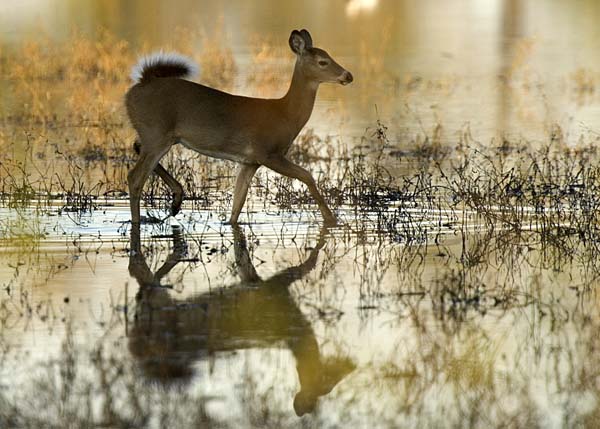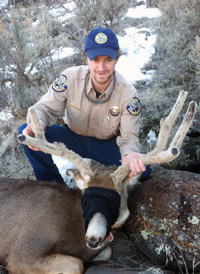 Epizootic hemorrhagic disease (EHD) has been reported in Missouri and Wisconsin.
Epizootic hemorrhagic disease (EHD) has been reported in Missouri and Wisconsin.
Find more information about the situation in Missouri through the Missouri Department of Conservation press release, here. In Wisconsin, the cause of death of 31 deer has not been confirmed, but EHD is suspected. If it is EHD, it will be the first outbreak since 2002 says the Milwaukee Journal Sentinel. Read the blog in the Milwaukee Journal Sentinel, here.
In South Dakota, the EHD outbreak has been severe enough to curtail deer hunting licenses, according to the Mitchell Daily Republic. South Dakota Game, Fish and Parks Department is removing all the unsold hunting licenses from several of the state’s hunting units and is offering refunds to hunters who would like to voluntarily turn in their licenses. Read the whole story in the Mitchell Daily Republic.
Map: Antlered deer harvest in South Dakota in 2010. Darker color is higher number of antlered deer per 100 square miles. Courtesy South Dakota Game, Fish and Parks.


 The Wisconsin Department of Natural Resources wants a four-day antlerless deer hunt as part of its strategy against Chronic Wasting Disease. Wisconsin Governor Scott Walker has cancelled that hunt, reports the
The Wisconsin Department of Natural Resources wants a four-day antlerless deer hunt as part of its strategy against Chronic Wasting Disease. Wisconsin Governor Scott Walker has cancelled that hunt, reports the  Earlier this summer, New York State Department of Environmental Conservation wildlife biologists banded 15 peregrine falcon chicks from five nests in western New York State. The birds are part of the growing peregrine population in the state.
Earlier this summer, New York State Department of Environmental Conservation wildlife biologists banded 15 peregrine falcon chicks from five nests in western New York State. The birds are part of the growing peregrine population in the state.

 Spring is here and a bunch of wildlife surveys are underway around the country.
Spring is here and a bunch of wildlife surveys are underway around the country.